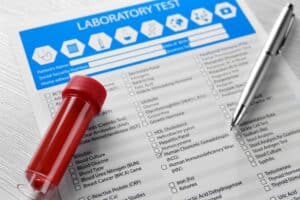Thirty-two months ago, life changed in ways I could never have predicted. In Part 1, I shared what it meant to live with uncertainty, to navigate illness without a clear diagnosis and to learn how to advocate for myself when the system could not offer answers.
This second part shifts focus from my personal story to the broader terrain of alternative therapies and the growing range of options now available to us. Over the past two and a half years, I have explored a wide spectrum of conventional, integrative and complementary approaches, a journey shaped by both personal need and professional curiosity. As Co-Founder and Academic Director at Sandown Business School, understanding these approaches also helps us better support our students, leaders and the wider coaching community.
I also want to be honest: these therapies are an investment. Some are costly, others affordable, and some can even be self-applied at home. Private diagnostics may work for some, while NHS-supported or self-guided options suit others. The key is choosing what feels right for your body, your circumstances and your resources.
Above all, remember this: everyone will have an opinion on what is best for you. While many views are well-intentioned, it is essential not to let other voices drown out your own. Listen to advice and listen closely to your body and intuition.
Therapies Explored:
Optimal Sound Therapy, Biofeedback, Biophoton Therapy, CellSonic, Nitric Oxide Treatment, Papimi, Heidelberg Test, Onnetsuki, Hydrogen Therapy, Oligoscan, DUTCH and Vascular Massage Bed; Chinese Acupuncture & Herbs; Kinesiology; Fascia Therapy; Hyperbaric; Perrin Technique; Health optimisation, longevity and performance combining diagnostics, functional medicine and biohacking therapies

Why I Explored These Therapies
For me, curiosity became an act of survival. With no single diagnosis or treatment plan, I had to piece together my own map. But this was never about chasing every possible therapy in search of a quick fix; that path can become its own trap. It became about listening carefully and making informed decisions at the pace my body could manage. I now say my body is like a cruise liner slowly turning toward health, rather than a speedboat; however much I wish it were different, I am finally learning to listen.
I share my experiences openly, what helped, what did not and what I would do differently. Not to promote any single approach, but to support you to feel empowered to make your own choices. And, most importantly, to know that in your struggle towards health, you are not alone.
Table of Contents
Optimal Health Group
As part of my recovery journey, I explored a range of treatments at this clinic, led by a naturopathic doctor. The clinic integrates conventional biochemistry with intuitive and energetic modalities aimed at restoring vitality and balance.
Following a full Optimal Health Assessment, I began a protocol which involved some of the following therapies, but this shows you the range of options available: Optimal Sound Therapy, Biofeedback, Biophoton Therapy, CellSonic, Nitric Oxide Treatment, Papimi, Heidelberg Test, Onnetsuki, Hydrogen Therapy, Oligoscan, DUTCH testing, mid-point reassessment and VBM (Vascular Massage Bed).
While many people report positive results from these therapies, my own experience was mixed. Despite committing fully, my health did not improve as I had hoped and deteriorated, leading to hospitalisation in November 2023. Looking back, the treatments did not address the underlying drivers of my illness.
I share this not to criticise the clinic; these approaches may work well for others, but to highlight an important lesson: choose mindfully, ask questions and trust your instincts. Practitioners bring expertise, but you are the expert on your own body; always hold on to that power.
Chinese Acupuncture & Herbal Medicine

In my case, the treatments were tailored carefully to the symptoms I shared. Acupuncture offered short-term relief, but because my underlying issues were complex, this approach did not reach the deeper drivers of my ill health.
I would still recommend exploring acupuncture and herbal medicine when there is a clear diagnosis and the therapy can be used in a targeted way. For some, these treatments can be deeply supportive; the key is ensuring they are part of a personalised, integrated plan.
Kinesiology

After my husband died, kinesiology played a significant role in restoring my energy, reducing intolerances and rebalancing my whole system. However, during my recent health challenges, my experience was different. Although the practitioner I worked with was knowledgeable, the sessions did not uncover the deeper drivers behind my current issues. This surprised me. My previous experience had been so positive that I realised I was placing my faith in an outdated belief; what worked in the past may not work today.
The key lesson from this experience for me is to make sure you find the right practitioner. Someone who works brilliantly for a friend may not be the right fit for your needs, and even a practitioner who helped you in the past might not be the best choice now. In theory, the techniques should work independently of the practitioner, but in my experience, the quality of support varies greatly depending on whether they ask the right questions for your body.
Fascia therapy
Fascia therapy focuses on releasing tension, improving mobility and restoring balance by working with the body’s connective tissue – the fascia. Fascia wraps around and supports every muscle, organ and bone. Restrictions in the fascia can result from injury, trauma, surgery, or chronic stress and may lead to pain or limited movement. Through targeted manipulation, this therapy aims to release stored tension and improve overall function.

For me, fascia therapy was a powerful and eye-opening experience, at times painful, but deeply effective. During one session, when the therapist touched the left side of my stomach, I instinctively pulled away, quite forcefully, which surprised me. Further exploration revealed that this was transferred pain and protection from my ribs, a legacy of an accident I had not realised the full impact of. As a child, I was dropped approximately 20 feet from a balcony. The person who dropped me never told anyone, and it was only at the age of 12, during an unrelated X-ray, that I discovered I had two previously broken ribs. It was as much a shock to me as it was to my mum, who was with me at the time.
Beyond this unexpected discovery, the treatment itself was highly effective. It helped address lingering issues with my ankle and supported work on lung scarring, giving me a greater sense of freedom and ease in my breathing. Fascia therapy can be intense at times, but in my experience, it unlocks deep, long-held tension and supports both physical and emotional release.
Where is your tension being held?
What works for you in releasing tension?
Do you find the tension reoccurs? Maybe even feels ‘stuck’?
Fascia work could be exactly what you need to loosen and strengthen your connective tissue.
Hyperbaric Oxygen Therapy (HBOT)

Unfortunately, when I attempted HBOT, I could not complete the session. The inflammation in my head and sinus was too severe, and I lasted only 1 minute and 56 seconds before having to stop. It took me some time to recover afterwards, which highlighted how sensitive my system still was at that stage of my healing journey.
For many, HBOT has proven highly beneficial, but my experience was a reminder of the importance of timing and readiness. Even promising treatments can overwhelm the body if introduced too soon. I still see the potential value of HBOT and may revisit it when my system is better prepared, but for now, it is a therapy I am approaching with patience and caution.
Osteoperformance Clinic & the Perrin Technique
The Osteoperformanc Clinic in Wimbledon offers tailored osteopathic care focused on restoring mobility, reducing tension and supporting the body’s natural alignment and nervous system balance.Their tailored approach aims to relieve physical restriction and support overall structural wellbeing.
The Perrin Technique
Used within the clinic, the Perrin Technique™ is an osteopathic method originally developed to support individuals with ME/CFS, fibromyalgia and Long COVID. It focuses on enhancing the drainage of toxins from cerebrospinal fluid, deeply through the lymphatic system, via gentle manual techniques applied to the head, neck, chest and spine. This process is designed to support the sympathetic nervous system in returning to regulated function by clearing accumulated toxins and improving lymphatic flow. Notably, the technique is complemented by self-care routines, such as simple exercises and guided self-massage, making it a collaborative path toward healing (see below for a link to try this at home!).
This therapy was particularly supportive for me. While it did not resolve the root cause of my condition, it provided tangible relief and momentum during recovery, especially when integrated alongside other approaches. I also liked the influences of bio-structural, science and neurology.
Here is Stephanie James, the owner of the Osteoperformance Clinic, collaborating with a patient utilising the Perrin Technique. She combines her extensive experience as an osteopath with various integrative treatments to provide comprehensive care.

So what has worked?
As mentioned above, there have been some interesting therapies, some that are nice to have if you have a deep pocket, others which have really supported my recovery, but the biggest difference has been using an alternative route, using science as their guide. And that leads me to talk about:-
Hum2n – Data-Driven Diagnostics and Biohacking for Optimisation

For me, Hum2n’s real strength lay in what the data revealed. Their comprehensive diagnostic packages included deep blood biomarker panels, metabolic and hormonal profiling, methylation and histamine activity analysis and detailed, report driven, consultant feedback session. These investigations uncovered systemic patterns that previous testing, both private and NHS had missed.
It was from these findings that we developed my current health protocol. For the first time, I felt I had a science-based roadmap that matched what my body was actually showing. Since following this tailored protocol, I have begun to see steady, measurable improvements rather than fluctuating cycles of deterioration.
NHS
I have not given up on the NHS and have continued to engage with them throughout this journey. However, the focus within the NHS has understandably been on treating symptoms, whereas Hum2n’s data-driven approach helped explain why those symptoms were occurring. A recent full day of tests at The Brompton Hospital confirmed several of Hum2n’s findings, which means I now have a treatment plan that integrates NHS care with my personalised protocol. Finally, there feels like light at the end of what has been a very long tunnel.

Being Your Own Health Advocate
If there is one lesson I have learned from this journey, it is this: you must be your own strongest advocate. No one knows your body, your energy, or your limits better than you do.
I also know this is not easy. It can feel overwhelming, especially if you live alone or lack consistent support from friends, family or community. But one thing has become clear to me: your body holds more wisdom than we often realise. If you find yourself having to ‘talk yourself into’ a treatment or decision, pause. That hesitation can be your gut signalling ‘not yet’ or ‘not right.’
Over the past two and a half years, I have seen the best and the worst of health care across conventional, integrative and alternative systems. There are extraordinary practitioners out there, but there are also moments when vulnerability can be exploited, sometimes unintentionally. When we are unwell, we are often desperate for solutions, and that makes us more open to influence.
In coaching, we talk about the ‘dark side’ of coaching. I have seen the same in health management. I have had practitioners suggest my illness was ‘all emotional,’ or that recovery depended entirely on following their protocol, usually involving further cost. Some implied that any lack of progress was my fault. Those moments taught me a hard but empowering lesson: never hand over your power.
Here are some practical ways I have learned to step into that role:
- Listen to your body first. It often knows more than anyone else. If a treatment feels wrong, trust that instinct.
- Ask questions, every time. If you do not understand what a test, diagnosis or therapy is for, ask. If the answer is vague, ask again.
- Track your data. I started recording my symptoms, triggers, good days and setbacks daily. Over time, patterns became clear that even doctors had missed.
- Be selective. More treatments do not always mean better outcomes. Before committing, ask: ‘What am I hoping to achieve? How will I measure success? What happens if this does not work?’
- Prepare for appointments. When practitioners share lots of technical information, it can trigger the nervous system and move us into the limbic brain state. In that heightened place, it can be harder to process what is being said. Bringing notes and key questions supports you to stay calm, engaged and in control.
- Seek second opinions. Especially before starting high-cost or intensive treatments. Listen to experiences from others and weigh multiple perspectives.
- Balance hope with realism. Stay curious and open, but also check in with your head, heart and gut. When all three are aligned, choices feel clearer and steadier.
- Find your Posse. Choose practitioners who listen, partner with you and encourage your autonomy, not those who create dependency. Meet up with friends, family, and colleagues who are part of your posse. Routing for you and willing you to succeed.
- Hold your boundaries. If something is not working, it is okay to stop. Progress comes from staying aligned with your values, not someone else’s agenda.
- Stay open and centred. This is your story and your journey. Find those who will walk alongside you, not those who try to lead you away from yourself.
When Systems Do Not Listen
There are times when, no matter how clearly you describe your symptoms or history, you will not be heard. Sometimes the answers remain unclear. Sometimes there simply are no answers yet. One of the hardest parts of my journey has been discovering just how fragmented our healthcare systems are, both conventional and integrative. There is no single roadmap for complex, multi-system conditions. Each specialist focuses on their part of the puzzle, but few join the dots. For the patient, that can feel isolating and, at times, deeply invalidating.
Your experience, however, is still real. Your story matters, even when others cannot see it, name it, or explain it.
I have also learned that when systems cannot connect the dots, you can still hold your own narrative together. That shift has been empowering. It is not about ignoring expert advice but rather learning to gather it, question it and integrate it into your own map of recovery.
I also encountered moments when some practitioner messages felt unhelpful or subtly undermining. For example:
- ‘Winter is coming — you know how bad you will be then.’
- ‘Everyone else is improving, you will too.’
- Or even, ‘Your body simply is not responding – but it will if you keep doing what I say.’
On the surface, these statements might sound reassuring and even have a grain of truth; however, they can leave you questioning your own experience, nudging you away from your inner knowing and eroding your autonomy. Pressing in on the vulnerabilities you may be experiencing and start to shift your internal language to blame and helplessness. If you find yourself in this position, pause and listen inwardly. It is okay to step back and reassess:
- Is this treatment working?
- Does this practitioner truly hear me?
- Am I still clear on my own goals and values?
If the answer is no, it is perfectly valid to change direction, even after investing time, money and hope. That does not mean abandoning longer-term protocols; it means testing, learning and adjusting as your body teaches you what it needs.
Right now, I am six months into a protocol informed by advanced diagnostics. I am seeing small, steady improvements, which feels right for my system. And yet, I am preparing for a re-check to reassess where I am and what adjustments are needed next. Healing requires two things:
- Persistence — continuing to search for what works, without chasing every possible option.
- Self–compassion — recognising that your body is doing its best and that progress may not always be linear.
When systems do not listen, you still have choices. You can build your own map, piece by piece, guided by science, your values and your lived experience. That combination, external data and inner wisdom, has been my anchor through uncertainty.
Closing Thoughts
Healing is rarely linear, and it is never one-size-fits-all. There is no single protocol, supplement, or therapy that universally works for everyone. The approaches I have explored are not ‘the answer’, they are simply markers along my path.
Your path will look different, and that is exactly as it should be.
If there is one message I hope you carry forward, it is this: listen deeply, choose wisely and trust yourself. You are the expert on your own body, not because you have all the answers, but because you live every moment inside its experience.
This is not about endlessly chasing the next treatment or outsourcing your decisions. It is about reclaiming agency, building your own map step by step, integrating science, lived experience and intuition in a way that works for you.
I have learned to combine data-driven insights from advanced diagnostics with slow, careful experimentation, sometimes discovering that ‘less’ is more. There are no shortcuts here, but there is progress.
And perhaps most importantly, know this: you are not alone. So many of us are navigating complex, unclear conditions and quietly reshaping what healing can mean when definitive answers are not yet available.
Finding your way forward is not about perfection; it is about partnership, with practitioners, with your support network and most of all, with your own body. With curiosity, patience and compassion, change becomes possible, even when the timeline looks nothing like what you imagined.

Pheona Croom-Johnson
Co-Founder and Academic Director of Sandown Business School. She has been in the OD field for over 35 years, partnering with Coaches, C-Suite and Senior Leaders.
Pheona is a triple credentialed Master Coach (ICF, EMCC, AC), Master NLP Trainer, Team Coach Supervisor (ACTC, ICF) and credentialed Supervisor (ESIA, EMCC), IFS Trained therapist (Level 1) with psychological foundations and training (BPS). She has an MA in Psychological Coaching and an MSc in Psychology of Change Agency.
Get in touch to find out more about coaching, leadership and/or supervision.
Share this article:





